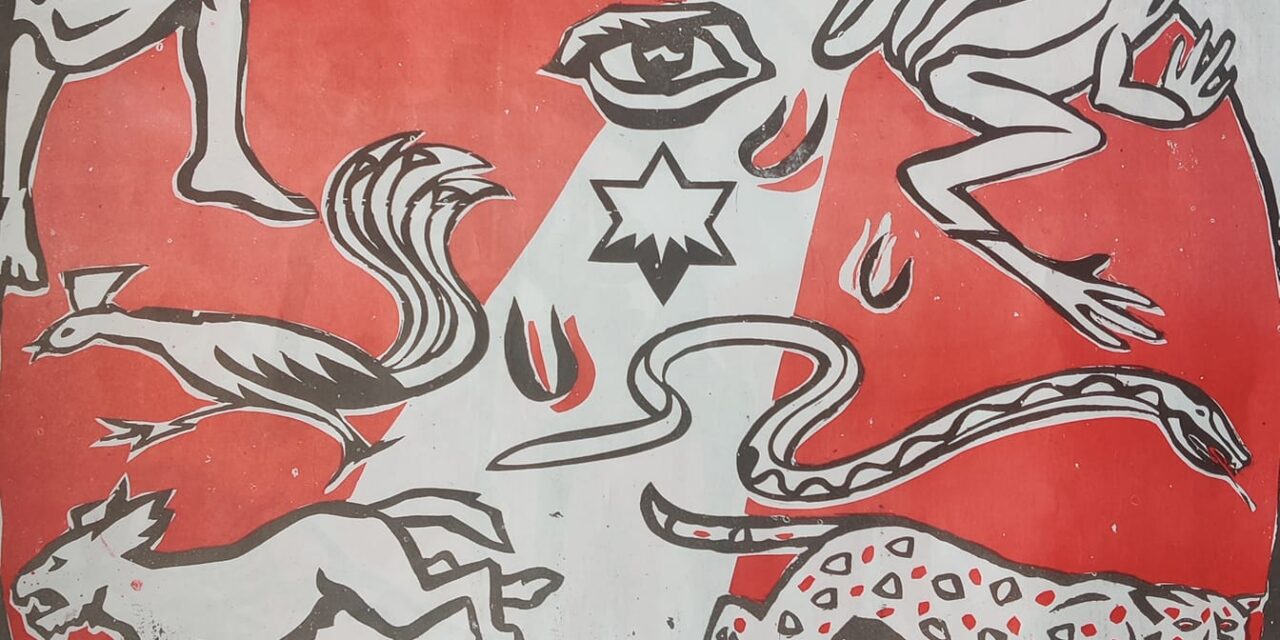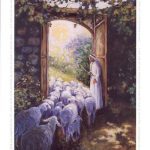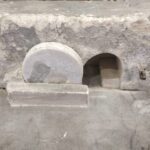Then the Pharisees went and plotted how they might entangle Him in His talk. 16 And they sent to Him their disciples with the Herodians, saying, “Teacher, we know that You are true, and teach the way of God in truth; nor do You care about anyone, for You do not regard the person of men. 17 Tell us, therefore, what do You think? Is it lawful to pay taxes to Caesar, or not?” 18 But Jesus perceived their wickedness, and said, “Why do you test Me, you hypocrites? 19 Show Me the tax money.” So, they brought Him a denarius. 20 And He said to them, “Whose image and inscription is this?” 21 They said to Him, “Caesar’s.” And He said to them, “Render therefore to Caesar the things that are Caesar’s, and to God the things that are God’s.” 22 When they had heard these words, they marveled, and left Him and went their way (Matthew 22:15-22).
In the Gospel of Matthew, Jesus Christ is teaching in the Temple, where Jewish society’s religious and civic leaders, the priests, and the elders were present. Beyond every political viewpoint and other multiple interpretations, the story about the image of Caesar points to a deliberate plot against Jesus. Today, it is no longer strange when different people with different opinions come together to plot against Jesus and His teachings. The Pharisees and Herodians in us can applaud Jesus to His face, seem to take His part, and speak what is true about Jesus, so hypocritical and sinister, simply wearing a face mask to play the role on stage. The Pharisees and Herodians make us a false and viper race; hence, many find it difficult to surrender their hearts to Him.
The ‘image’ concept appears multiple times in the Scripture. In the book of Genesis, God made man and woman in His image (Gen 1:27; 9:6). The image of Caeser in God’s Temple reminds us about the importance of the true image with Paul’s assertion that Jesus is “the image of the invisible God” (Col. 1:15). Jesus Christ as the image of the invisible God points to a renewing explanation of various characteristics of Jesus Christ and His followers (Col. 1:15-20). Images in Hebrew are translated as “statue, inscribed column, or idol.” In some cultures, a statue represents the God of individual deities. Man and woman created God’s image and represent Him.
Honouring the image of God is more important than honouring the coin’s image. The image on an object shows ownership. Indeed, we belong to God and not government. Jesus Christ is the head of the Church, not Caesar. Politicians will come and go since all power and authority is in Christ alone. Therefore, the legitimate authority delegated to the state must protect the Church and the Christians to exercise their faith. When Jesus asked the religious leader, “Whose image is this?” He indirectly told them that the image on the coin is an impression of Caesar, a representation of Caesar. The religious leaders, rather than being carrying and representing the image of God, were carrying, and representing the image of Caeser (Matt 22:20). Jesus concluded that they should give to Caeser what is his (tax) but give to God what is His, themselves, as God’s image. We do not belong or should represent Caesar because we (man and woman) are stamped with the image of our owner, God. As the coin was stamped with an image of its owner, so is humanity stamped with the image of its owner—God through the death of Jesus Christ on the Cross.
The religious and civic leaders have challenged Jesus about the authority of his words, deeds, teachings, and actions. Two further sectors of Jewish society confront Jesus Christ, the followers of the Pharisees (verse 15) and the Herodians (verse 16), the people who supported Herod, the Roman puppet king, and his successors (Matt 22: 15-22). They are united in their plot to entrap Christ, and while they appear to speak to him respectfully, they speak with irony. Imagine if two enemies agreed and joined forces together against a common enemy, even in the Temple. God’s Temple is not free from enemies of the Gospel with their images of Caesar. Many of these enemies may have religious titles like the Pharisees and political inclinations like the Herodians.
Jesus’ teachings, parables and stories take in three key areas: morality, institutions, and leadership. Jesus’ confrontation with the two sectors of the Jewish society reminds us that ‘morality provides the principles of right and wrong that govern Christian behaviour, the standard by which we live, love, lead, and act. The renewal of institutions and leadership as crucial areas of Jesus’ teaching points to the context through which we become a body of Christ, home, marriage, and government. When Church institutions can no longer give concrete biblical form to our missional values and sustain and spread them, morality, leadership, and institutions begin to decline and languish under the images of Caesar. Leadership, therefore, loses the mission grand story in their hearts and is unable to rise to point the way forward or call others to follow towards the fulfilment of the Great Commission.
The opposition of the religious and civic leaders to Jesus in the Temple resonates with the 21st-century church leadership shortage of moral-visionary leadership within the structures of the Church.[1] Jesus’ encounter with the religious and civic leaders in the Temple reminds us about men and women we work with but with overall lack of vision for God’s mission. Too often, the representations of the Pharisees and Herodians in the Church are more concerned with the survival of denominational structures and one’s position within them than with faithfulness to God’s mission. In this narrative, Jesus’s representation points to the need for moral-visionary leadership for the Church to be renewed and revived in the 21st century. The Pharisees’ and Herodians’ representations of the images of Caesar point to institutional church structures deeply influenced by radical relativism that do not like visionary leadership driven by moral and eternal passion. Visionary leaders devoid of images of Caesar can think big and bold. However, shamefully, they are constantly confronted and often cut off at the knees. Hence, many institutions have been immunised against Jesus’ model of visionary leadership that can put the Pharisees and Herodians where they belong.
The reflection is when and how Jesus asks His accusers, the Pharisees and Herodians, to produce a denarius. They did so immediately. The responses of Jesus’ accusers were so revealing because they carried an image of Caesar into God’s Temple. Imagine the people who would teach Jesus a lesson about devotion to God were sold out to Caesar, to the flesh. Anyone sold out to Caesar will continuously pursue the bidding and agendas of Caesar.
If Jesus said paying taxes to Caesar was wrong, He would ‘be provoking Rome to immediate action against Him. Had Jesus said that paying taxes to Rome was right, his questioners were ready to accuse Jesus of disloyalty to Israel.’ Jesus describes His interrogators as “hypocrites” for pretending to respect him but intending to discredit him (v. 18). Just as Christ sees through the plot that is being set for him and the intended malice, I pray that you will see beyond the plot and malice of your enemies.
The image of Caesar also represents works of the flesh, including other things that make us compromise our belief and values. The image of Caesar in God’s Temple is represented by Pharisees and Herodians, a yoke of leadership entangling and challenging the Church’s doctrines, spirit, and discipline. The agenda of the Herodians and Pharisees was to compromise the Church through debates and arguments. Jesus called them ‘hypocrites.’ The representations of Pharisees and Herodians brings different ideology of the world (Caesar) to destroy the church. It is also easy to become an image of Caesar in the church through the works of the flesh that contend against God’s mission.
In a complicated world and a divided church with different human (Pharisees and Herodians) agendas, a power play is going on, especially on the church altar. Christians, as God’s true image, are called to remain faithful, rise, and pursue God’s agenda of the Great Commission beyond borders and conflict with worldly power. Conflicting priorities are daily in every sphere of life and workplace, including the Church. The image of Caesar in the Temple is about the treacherous acts of religious leaders to discredit Jesus’ teachings and ultimately remove Jesus from the Temple (Matt 22:15).
There is always an alignment between the enemies of the Gospel like the Pharisees and Herodians, strange bedfellows to challenge God’s mission. Equipped with ideology of priorities and cynical flattery, Jesus was asked to make a hard choice of priorities between the ideologies of the Pharisees and the Herodians (v.19). Jesus as the described in the hymn below, in His Almightiness and Authority, made his interrogators’ face up to the choice they gave him.’
1 Herodians and Pharisees,
They join with one accord;
And as united enemies,
Seek to destroy our Lord.
2 Tho’ they applaud him to his face,
And seem to take his part:
They like a false and viper race,
Hate him with all their heart.
3 Where Satan governs all the mind,
And rules the inward man;
there are the pow’rs of darkness join’d
to do what harm they can.
4 All Christian must be on their guard,
And wrath on ev’ry hand;
They must be tempted like our Lord,
By Satan and his band.
5 But Christ, their great and mighty head,
Who all their danger knows;
Will disappoint what snares are laid
By them, their crafty foes.[2]
As followers of Jesus Christ, the invisible images of God, we ‘have God’s image on us; we belong to God, and the only way to true happiness is to put God first’ in all our priorities. Join me to prayerfully sing with Frances R. Havergal (1877) to remain faithful images and soldiers of Christ in God’s temple and in an alien land, noble, true, and bold.
1. Who is on the Lord’s side? Who will serve the King?
Who will be His helpers, other lives to bring?
Who will leave the world’s side? Who will face the foe?
Who is on the Lord’s side? Who for Him will go?
By Thy call of mercy, by Thy grace divine,
We are on the Lord’s side—Savior, we are Thine!
2. Not for weight of glory, nor for crown and palm,
Enter we the army, raise the warrior psalm;
But for love that claimeth lives for whom He died:
He whom Jesus saveth marches on His side.
By Thy love constraining, by Thy grace divine,
We are on the Lord’s side—Savior, we are Thine!
3. Jesus, Thou hast bought us, not with gold or gem,
But with Thine own lifeblood, for Thy diadem;
With Thy blessing filling each who comes to Thee,
Thou hast made us willing, Thou hast made us free.
By Thy grand redemption, by Thy grace divine,
We are on the Lord’s side—Savior, we are Thine!
4. Fierce may be the conflict, strong may be the foe,
But the King’s own army none can overthrow;
’Round His standard ranging, vict’ry is secure,
For His truth unchanging makes the triumph sure.
Joyfully enlisting, by Thy grace divine,
We are on the Lord’s side—Savior, we are Thine!
5. Chosen to be soldiers, in an alien land,
Chosen, called, and faithful, for our Captain’s band;
In the service royal, let us not grow cold,
Let us be right loyal, noble, true and bold.
Master, wilt Thou keep us, by Thy grace divine,
Always on the Lord’s side—Savior, always Thine!
[1] Regele, Mike, Schulz, Mark, Death of the Church: The Church has a choice: to die as a result of its resistance to change or die in order to live (Grand Rapids, M: Zondervan Publishing, 1995), pp. 87-100.
[2] https://hymnary.org/text/herodians_and_pharisees#pagescans











Recent Comments